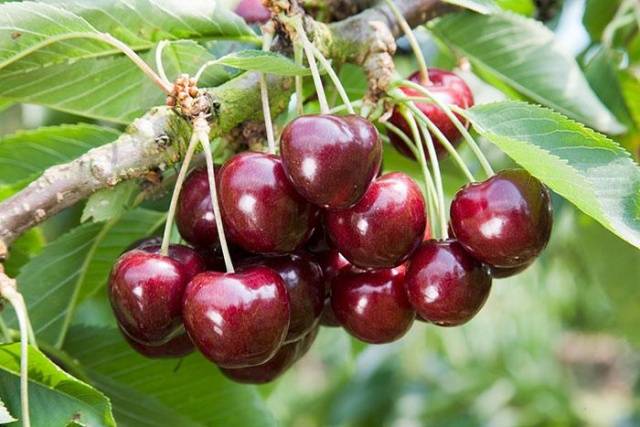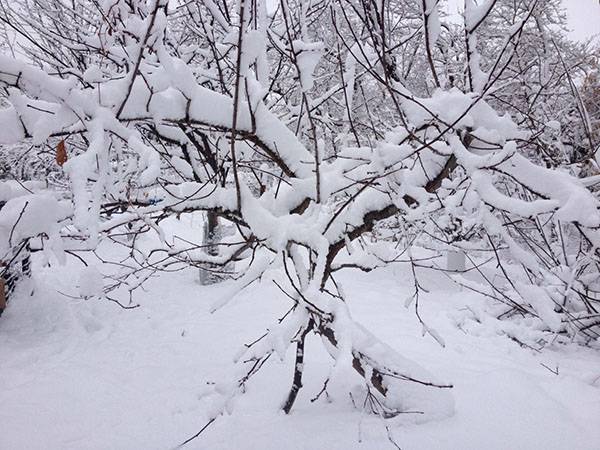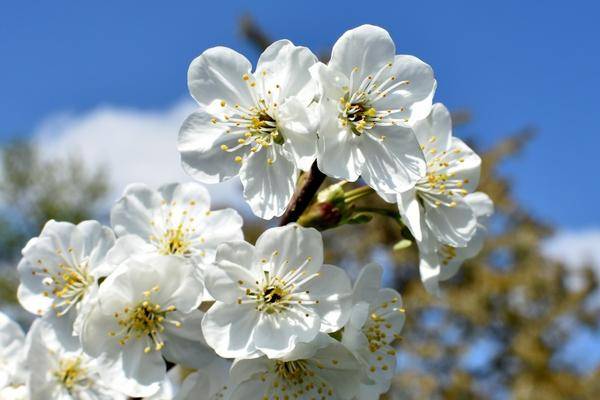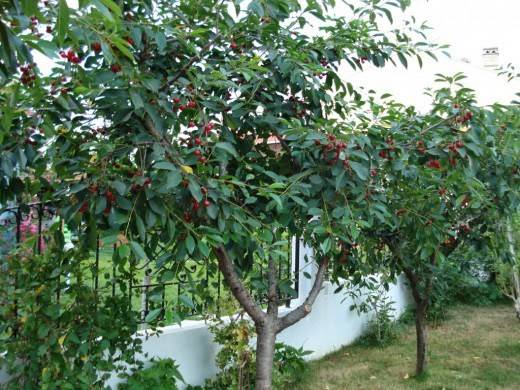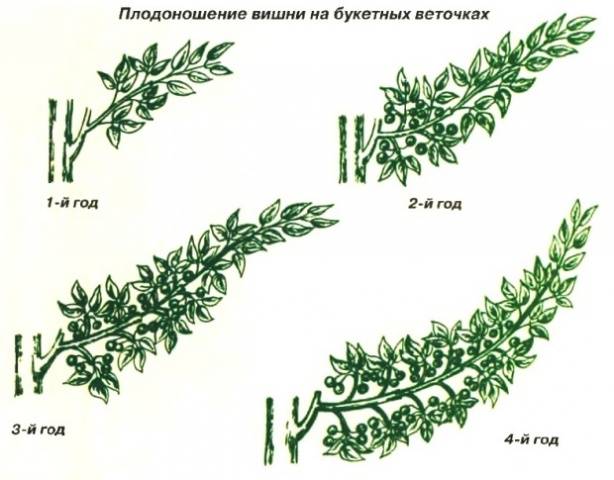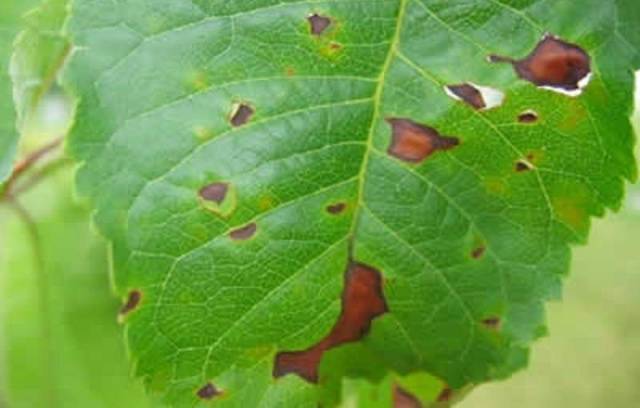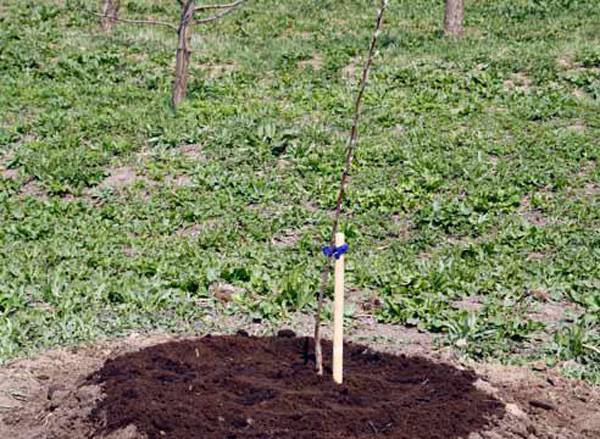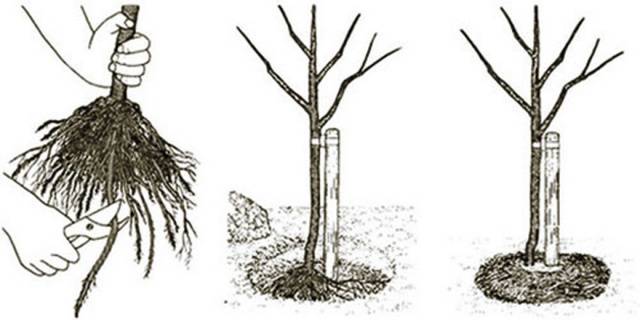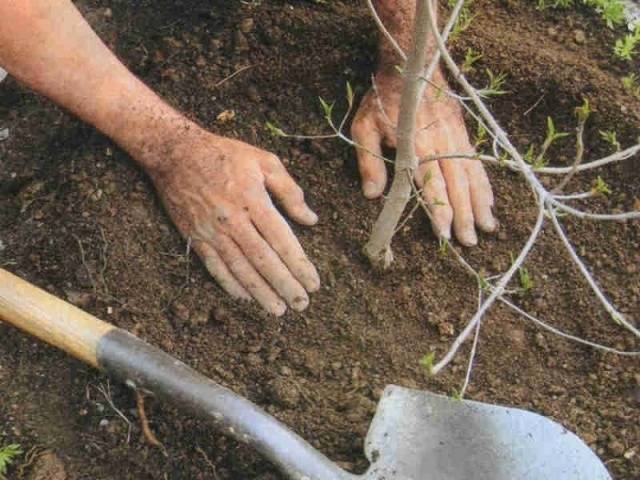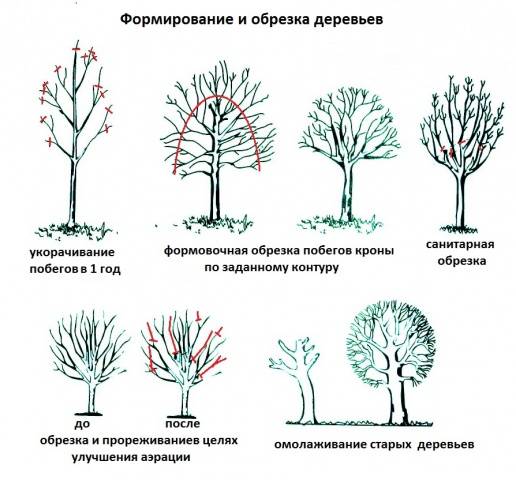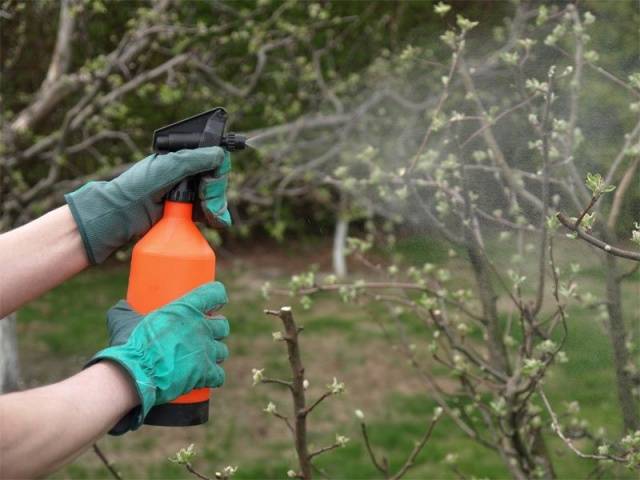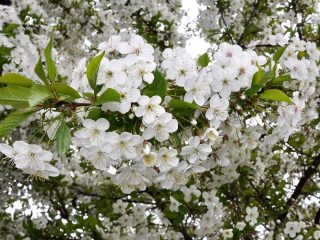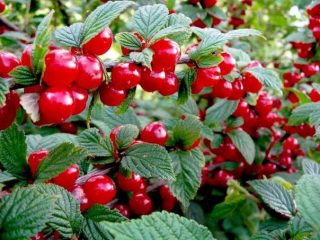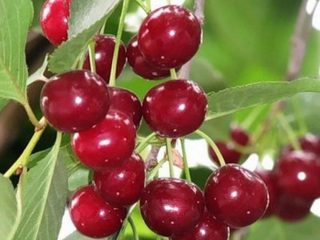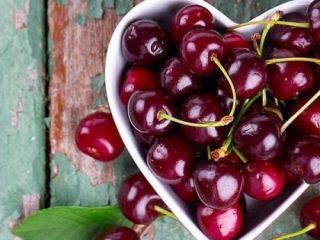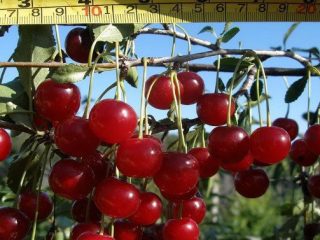Content
A gift for teachers - an early variety of cherry, beloved by gardeners in central Russia. Taking into account the characteristics of the variety, its strengths and weaknesses, by planting a tree according to the rules and properly caring for it, you can get stable good yields from year to year.
History of selection
The early cherry variety Gift to Teachers was artificially bred at the All-Russian Research Institute for Breeding Fruit Crops in the city of Orel. The authorship of the variety belongs to A.F. Kolesnikova, A.A. Gulyaeva, A.V. Zavyalova and E.N. Dzhigadlo. It was obtained as a result of crossing the self-fertile, high-yielding, winter-hardy Lyubskaya cherry with the early Orlovskaya cherry, which is resistant to coccomycosis.
State tests of the variety have been carried out since 2003.
Description of culture
The Gift for Teachers variety is characterized by medium-sized trees, no more than 3 m in height.Their crown is raised, spreading, quite wide, round in shape and of medium density.
The bark at the bottom of the trunk and on the main branches is smooth and brown. The shoots are straight, medium in size.
Cherry leaves Gift for teachers - dark green, egg-shaped. The leaf blade is jagged along the edge and has a pointed tip. Surface – flat, matte, smooth. The petiole is 17 mm long and almost 2 mm thick, colored with anthocyanin pigment.
The buds (growth and flowering) are slightly deflected from the shoots, they are about 4 mm in length.
The shape of the Cherry Gift for Teachers fruit is round, the color is dark red. There is no waxy coating on the surface. The pulp is red, juicy, moderately dense. The average weight of the fetus is from 4.1 to 4.5 g; while the bone makes up about 6% of it. The cherry pit of this variety is round and is easily separated from the pulp. The length and thickness of the stalk are average.
The longevity of trees is considered high.
The fruiting abilities of the cherry Gift for Teachers are maximized in the Belgorod, Voronezh, Kursk, Tambov, Lipetsk, and Oryol regions of the Russian Federation.
Characteristics
Drought resistance, winter hardiness
Using laboratory research, it was revealed that the winter hardiness potential of the Gift for Teachers cherry is very high. With reversible damage to the buds and tissues, this cherry variety is able to withstand temperatures down to -38 degrees (in the middle of winter) and up to -20 (after the thaw).
In particularly unfavorable years, the rate of freezing of flowers is about 0.9%.
Having assessed the water-holding capacity of the leaves and the level of restoration of their water content, scientists characterized this cherry variety as a form with a high degree of heat resistance - the ability to withstand high temperatures.However, in terms of drought resistance (the ability to withstand prolonged lack of water), Gift for Teachers was not highly rated, inferior to many other varieties.
Flowering period, pollination and ripening time
Cherry blossom period Gift for teachers is medium (from May 15 to May 20).
This cherry is partially self-fertile (capable of setting from 5 to 18% of fruits from its own pollen). However, to obtain a more generous harvest and improve its quality, it is recommended to plant a different variety of cherry next to it - a pollinator.
Pollinators of the cherry Gift for Teachers should be close to it in terms of flowering time, fruiting period and longevity. Plants should be planted at a distance of no more than 35-40 m from each other, taking into account that there are no flowering trees of other crops between them (for example, apple trees, pears). In this case, the varieties will be well pollinated by bees - as well as other insects - and will successfully set fruit.
So, in a cool and rainy spring, flowering can last more than a week. Insects will not be able to actively visit the flowers, and the latter will fall off. In the case of a warm spring, both early and late varieties can bloom and pollinate at the same time.
The presence of bee hives nearby will also create excellent conditions for crop production.
Cherry fruits ripen as a gift for teachers early (by the beginning of July).
Productivity, fruiting
Cherry trees of this variety begin to bear fruit in the fourth year of life. They have an average yield (53.3 c/ha, or approximately 7–10 kg per tree).
The composition of cherry fruit Gift for teachers (for every 100 g) is rich:
- ascorbic acid (more than 15 mg);
- catechins (more than 300 mg);
- anthocyanins (more than 200 mg).
The percentage of dry matter in them is about 18.2%, acids – 1%, sugar – almost 12%.
Area of application of berries
Cherry fruits Gift for Teachers are juicy and have a sweet and sour taste. The variety is considered a table variety, but is often used for making jam and compotes.
The tasting rating of this cherry is 4.3 points (with a maximum of 5).
Resistance to diseases and pests
One of the main characteristics cherry varieties A gift for teachers is the relatively high resistance of the variety to coccomycosis, a dangerous fungal disease that affects stone fruit trees. This cherry is moderately resistant to monilial fruit rot. At the same time, this variety is rather weakly resistant to other fungal diseases (anthracnose, scab, holey spot).
This video will help you learn how to deal with fungal diseases of cherries:
Significant harm to the Gift for Teachers cherry tree, as well as to other varieties of cherry trees, can be caused by:
- parasitic fungi;
- insect pests - worms, aphids, ringed silkworms, weevils, shoot moths, etc.;
- birds (spoil the harvest).
Advantages and disadvantages
Advantages | Flaws |
Early fruit ripening | Does not have high resistance to most fungal diseases |
Stable yield | Weak resistance to drought |
Winter-hardy variety | Average taste of fruits |
High heat resistance |
|
Relative resistance to coccomycosis and monilial rot of fruits |
|
Partial self-fertility |
|
Fruits are rich in nutrients |
|
Landing Features
Recommended timing
The timing of planting a cherry tree depends on the region:
- in areas of the middle zone, it is preferable to plant cherries in the ground in early spring, when frosts stop and the soil thaws and dries slightly;
- in the southern and central regions with a milder climate, autumn (October) planting can be done - about a month before the soil begins to freeze.
Choosing a suitable location
For cherries of this variety, light (sandy and sandy loam) soils, loose and loose, as well as medium loamy soils are preferred. The acidity of the soil should be neutral.
It is necessary to choose a well-lit area (preferably on the south side), taking into account the longevity of the cherry tree and the possibility of its growth.
What crops can and cannot be planted next to cherries?
The optimal neighbors for the Gift for Teachers cherry tree will be:
- cherry trees of other varieties;
- cherries;
- Rowan;
- grape;
- hawthorn;
- elder.
You should not plant the following crops next to it:
- Linden;
- birch;
- maple;
- apricot;
- nightshade vegetables (eggplant, pepper, tomato);
- some shrubs (raspberries, gooseberries, sea buckthorn).
Selection and preparation of planting material
Choosing cherry seedlings as a gift for teachers can be either two-year or one-year old, but you should, first of all, pay attention to the roots: they must be healthy, not damaged and not spoiled by insects.
After purchasing, the roots of the seedlings are moistened with water, wrapped in cloth, and then in film. Before autumn planting, they should be immersed in water for 6-10 hours (after slightly trimming the ends).
If planting is planned in the spring, seedlings are usually purchased in the fall and dug in for the winter, covering the ground with spruce branches over the roots.
Landing algorithm
Planting a cherry tree as a gift for teachers is done as follows:
- in the garden you should prepare a planting hole measuring approximately 60*60*60 cm;
- drive a stake (about 1 m high) into the center of the hole - it will serve as a support for the plant;
- first add fertilizer to the bottom, then add 5-8 cm of fertile soil;
- expose the seedling, straighten its roots;
- fill the hole, compacting the soil well and forming a hole around the seedling;
- water the plant with two or three buckets of water;
- fill the hole with earth, humus or peat;
- Carefully tie the cherry to the support.
Subsequent care of the crop
Cherry pruning A gift for teachers after planting is that all branches of the seedling, including the central shoot, are shortened by about a third, leaving three buds. In the second and third years of life, cherries undergo formative pruning.
Water the cherries several times a season:
- at the end of spring;
- at the beginning of August;
- before the onset of cold weather.
Schedule of basic fertilizing of cherries Gift for teachers:
Deadlines | Fertilizers |
Simultaneously with the first watering | Mineral, solution of manure with wood ash |
After 2 weeks | Mineral |
Before winter comes | Organic, phosphorus-potassium |
To protect cherry trees from rodents, it is recommended:
- wrap the trunks with a plastic mesh with small cells;
- soak sawdust with an aqueous solution of carbolic acid (5 g per 1 l) and spread them in tree trunk circles;
- Place coriander inflorescences under the young cherry seedlings.
Diseases and pests, methods of control and prevention
| Diseases/pests | Symptoms/characteristics | Prevention and methods of control |
| Anthracnose | Dull pinkish spots on the berries, developing into tubercles. Subsequently, the berries become mummified | Triple treatment of the plant with polyram solution (20 g per 10 l of water) |
| Scab | Cracks and velvety marks of marsh-brown color on the fruits | Warning - spraying cherries with nitrafen before the buds open. Treatment – triple treatment of wood with Bordeaux mixture (1%) |
| Hole spot | Red-brown lesions, then through holes on the leaves, the bark on the shoots cracks, the fruits dry out and are deformed | Collecting and burning diseased leaves, fruits and shoots. Treating trees before buds open with iron sulfate or Bordeaux mixture (3%) |
| Aphid | Colonies of black shiny beetles (up to 2 mm in size) sucking sap from plants | Destruction weed. Spraying cherries with infusions of garlic, onion, dandelion, ash |
| Weevil | Bronze-green beetle with a crimson tint, feeding on buds, flowers, and later on ovaries | Loosening the soil under trees. Spraying with Fufanon and Kinmiks |
| Ringed silkworm | A dark gray furry caterpillar that feeds on leaves and buds. "Web" on cherry branches | Removing and burning egg clutches. Treating the tree with nitrafen before the buds open |
| Shoot moth | Yellow-green caterpillar destroying buds and young foliage | Loosening the soil under trees. Spraying cherries with Intravir or Decis during bud growth |
| Parasitic mushrooms | Honey mushrooms or tinder fungi growing into the lower part of the trunk | Remove the parasite, clean the wound, treat it with copper sulfate (3%) and cover it with garden pitch. |
Conclusion
Common cherry Gift for teachers - an early productive variety, cold- and heat-resistant, characterized by partial self-fertility, grows well in the regions of the Central Black Earth region. However, this variety does not tolerate drought well, and also has poor resistance to most fungal diseases - we should not forget about this when choosing it for a personal plot.
